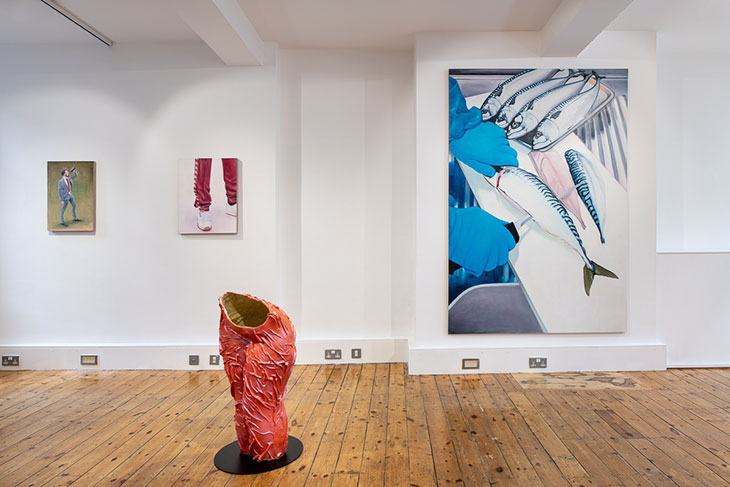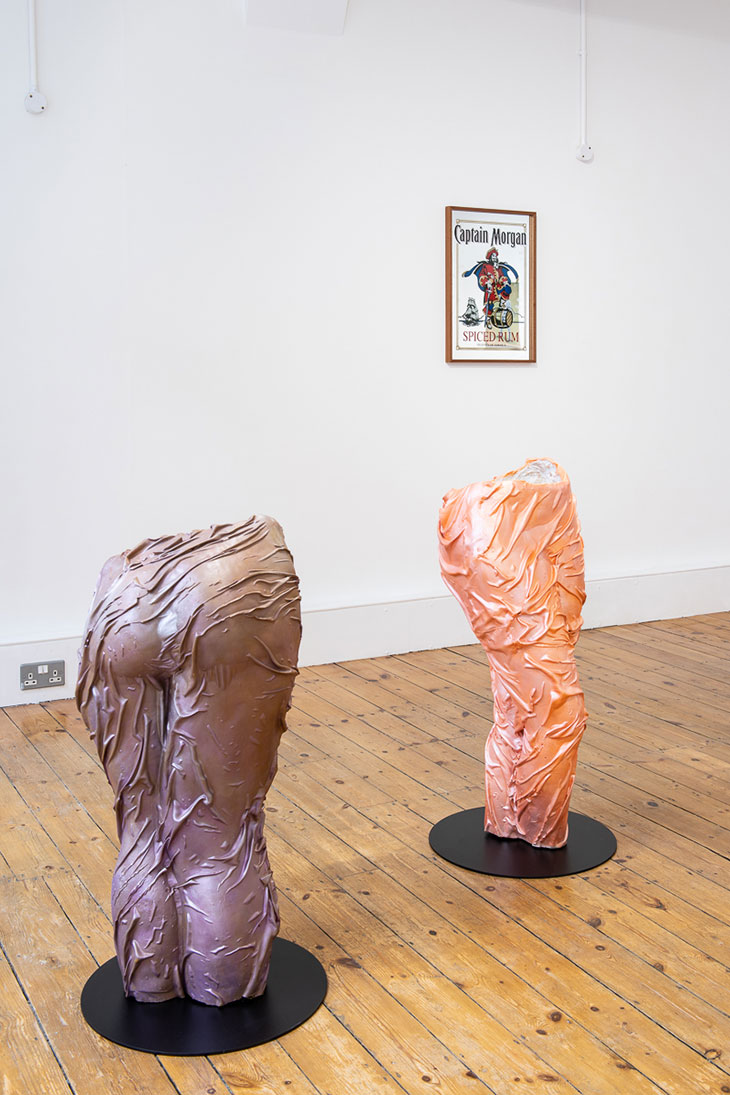‘Bon voyage! You certainly have courage.’
‘Very brave time to open!’
‘Continue to go against the tide!’
Never read the replies to social media posts. I did, and at some point I realised that the replies to my announcement that I was opening a gallery in mid July were sounding very much like the droll observations of Sir Humphrey Appleby, of the British political satire Yes Minister. In one episode Appleby – a career diplomat – describes what being labelled ‘brave’ or, even worse, ‘courageous’ actually means: ‘“Controversial” only means “this will lose you votes”. “Courageous” means “this will lose you the election”.’
I had no intention of being brave, courageous, or ‘the intrepid Niru Ratnam’ – as I was described in a significant piece of press on the gallery. I see myself as many things – a centrist dad, highly opinionated with a poor sense of boundaries, for instance – but intrepid isn’t one of them. This approach certainly had no place in the business plan that I put together carefully last year. Instead I had outlined my idea of a small commercial gallery that would embrace a minority-majority perspective and be contextualised by the issues I had written about and made exhibitions around over the last 20 years. The idea was to be a lean, mean machine, to save on staff costs by trying to do most things myself, and to not really bother with far-flung art fairs or fancy dinners at the Chiltern Firehouse. My opening show was planned for April with three artists – Kobby Adi, Lydia Blakeley, and Jala Wahid – and I had a schedule for exhibitions through the rest of the year.
In late January I was with my partner talking about the gallery in my local pub, the Chesham Arms, when I received a message from an old friend, a former government policy-maker and currently high up in a leading insurance firm. He had been following developments of the new virus in Wuhan closely, he said, and it was much more serious than Western governments realised: more like the Spanish flu in terms of global impact. To which my reply was more or less: ‘Nonsense. This is a typical overblown response of ex-New Labourites. No-one will stop me drinking in the Chesham and my gallery will of course open in April.’ Three months later, to paraphrase our prime minister, the ancient, inalienable right of free-born people of the United Kingdom to go to the pub, to drink incredibly quickly and look for a fight was taken away. The Chesham was shuttered. And not only could I not open my gallery, I couldn’t actually get to see it, as the staff of the commercial agents I was dealing with had disappeared into home-working – plus home-baking and an hour of exercise a day. Meanwhile, the solicitor negotiating on the lease stopped working on certain days; it was never clear which days these were.

Installation view of ‘Suture: Kobby Adi, Lydia Blakeley, Jala Wahid’ at Niru Ratnam, London, 2020. Photo: Damian Griffiths
Other things I had taken for granted became complex. Two of the artists could no longer get to their studios. Planned final studio visits went out the window, replaced by Zoom calls – which for all their merit are not the best for viewing artworks. Trying to ship three sculptures from Vienna that were supposed to be in the first show suddenly became a logistical nightmare. Shippers emailed back balefully when I asked whether they had trucks running through Europe. One, previously known for their eye-watering rates and somewhat brusque style, wrote to say that we all had to stick together in these times. I was tempted to reply that, while I agreed with the sentiment, this observation didn’t particularly help me with a shipping solution. In the end the vagaries of shipping during lockdown and the fact that I couldn’t get into the gallery led to a less-than-ideal period of crates being stored in my dining room.
On the other hand, some things became straightforward, like not doing big expensive dinners at the Chiltern, which by now had changed its strapline to ‘Always providing safety. Since 1889’ – as though there were a connection between the building’s time as an actual fire station and its current rendition as an overpriced bar. I was also suddenly united with every other gallery on the planet in our absence from art fairs; they had all been postponed or transferred to online viewing rooms.
By June places were tentatively thinking about opening up. Art dealerships were recognised by the government as ‘non-essential businesses’, which seemed a fair enough description. In practical terms this meant it was possible to open in late June. Some went big on being ‘Covid-secure’: a weird red-and-green light system and large curvy ‘rear-view’ mirrors in one blue-chip gallery near Piccadilly, for instance. Others opted for Perspex screens at the front desk and limited numbers. Some remained closed. One ‘brave’ gallery in the Bethnal Green cluster even tried putting on an outdoor private view. It rained.
My property agents, meanwhile, were slowly returning to work and the solicitor had graciously decided to start picking up the phone again. I decided to open in mid July. I could finally offer proof, to the artists who had been waiting patiently since April for their show to be installed, that this gallery wasn’t a figment of my deranged imagination. I posted notifications on social media and, without really meaning to, became the intrepid gallerist launching his business immediately after lockdown.

Installation view of ‘Suture: Kobby Adi, Lydia Blakeley, Jala Wahid’ at Niru Ratnam, London, 2020. Photo: Damian Griffiths
It still wasn’t clear to me if anyone would turn up. When I was finally allowed to visit the gallery again in late June, Soho was totally deserted. Shops were marking places to queue on the pavements (wildly optimistically, as it turned out) and one-way systems around their stores. Restaurants and bars remained shut. Government advice on the practicalities of how to open was bafflingly unclear. And there was little advice on offer for new businesses, presumably on the basis that no one would be ‘courageous’ enough to open one at this point. Yet the works got shipped out of the dining room and installed. All three artists managed to get into the space at different times during installation. The press release was made into a document to be downloaded using a QR code rather than printed out. The exhibition opened, and could be viewed by appointment from mid July.
The response was genuinely heartwarming. It has felt like something from before the art world turned into a global juggernaut – people calling on the telephone (a novel experience) who then turn up, take a look and have a conversation about what they are looking at. I realise that when a vaccine comes along and the late-capitalist order reasserts itself this might all disappear again, replaced once more by the crazed circuit of fairs and dinners. But part of me hopes that somehow we’ll be able to cling on to this new-old-courageous way of working.
‘Suture: Kobby Adi, Lydia Blakeley, Jala Wahid’ is at Niru Ratnam, London, until 29 August.













![Masterpiece [Re]discovery 2022. Photo: Ben Fisher Photography, courtesy of Masterpiece London](http://zephr.apollo-magazine.com/wp-content/uploads/2022/07/MPL2022_4263.jpg)
‘Like landscape, his objects seem to breathe’: Gordon Baldwin (1932–2025)